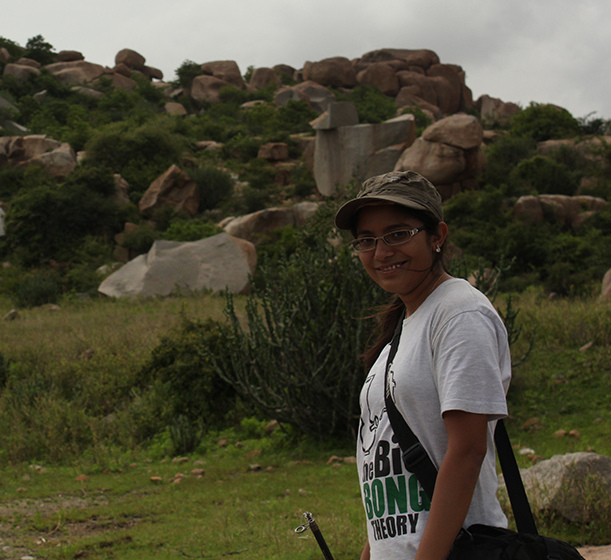Urbanisation is causing stress and degrading social interaction in lizards too! (#77)
Rapid global urbanisation poses various challenges for many species and is one of the major threats to biodiversity today1. While urbanisation is known to cause local extirpation of species1, the effects on physiology and behaviour for those species that persist remain poorly understood. We investigated the impacts of urbanisation on social communication and hormone levels of the rock agama Psammophilus dorsalis, in urban and rural areas around the city of Bangalore (India). Psammophilus dorsalis is a sexually dimorphic lizard wherein males show dynamic colour changes ranging from black and red to yellow and orange during social interactions with conspecifics. We found that baseline and stress-induced plasma corticosterone levels were higher in males from urban areas compared to males from rural areas. To understand social interactions, males from urban and rural areas were exposed to staged encounters with conspecific males and females and the resulting colour and behavioural displays were recorded. When interacting with conspecific males urban males showed higher physical aggression including bites. By contrast, when exposed to females, rural males were quicker to change colour, were brighter red and displayed a greater number of push-ups and head bobs. Our results suggest that human-induced disturbance might be resulting in elevation of stress hormone levels and reduction in visual displays during social interactions in the rock agama P. dorsalis. We speculate that the changes in native habitat, alteration in the prey and predator community and higher local lizard densities due to habitat fragmentation in urban areas might be among the various reasons for increased stress, degradation of visual signalling and increased aggression in P. dorsalis 2,3,4,.
- McKinney, M. L. (2008). Effects of urbanization on species richness: A review of plants and animals. Urban Ecosystems, 11(2), 161–176
- Calisi, R. M., & Hews, D. K. (2007). Steroid correlates of multiple color traits in the spiny lizard, Sceloporus pyrocephalus. Journal of Comparative Physiology. B, Biochemical, Systemic, and Environmental Physiology, 177(6), 641–54
- Fitze, P. S., Cote, J., San-Jose, L. M., Meylan, S., Isaksson, C., Andersson, S. Clobert, J. (2009). Carotenoid-based colours reflect the stress response in the common lizard. PloS One, 4(4), e5111.
- French, S. S., Fokidis, H. B., & Moore, M. C. (2008). Variation in stress and innate immunity in the tree lizard (Urosaurus ornatus) across an urban-rural gradient. Journal of Comparative Physiology. B, Biochemical, Systemic, and Environmental Physiology, 178(8), 997–1005
 BEHAVIOUR 2015*
BEHAVIOUR 2015* 